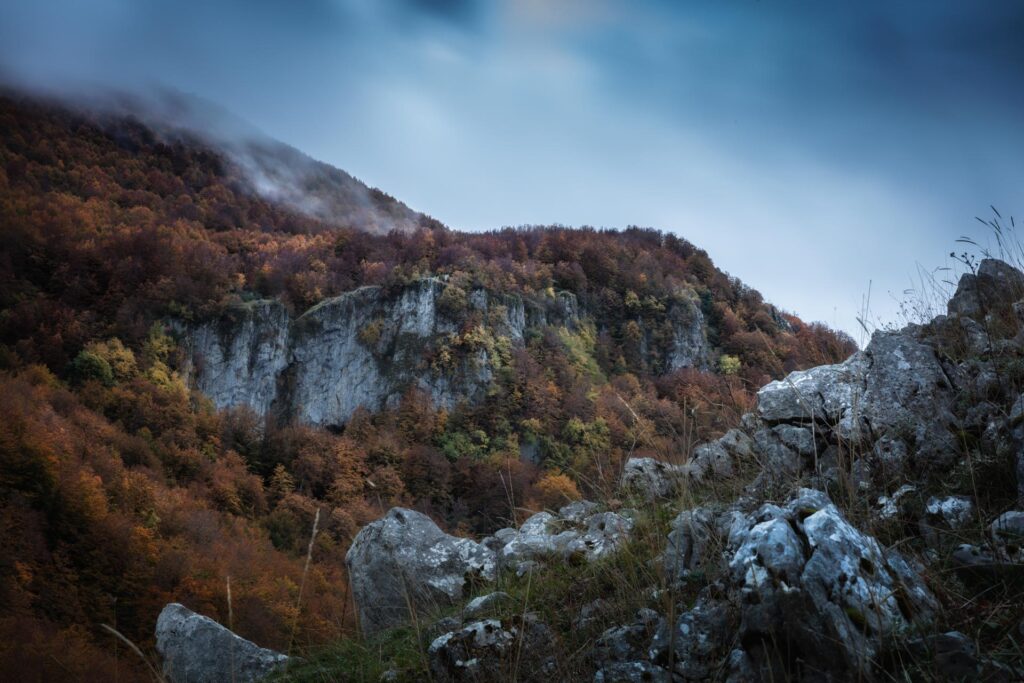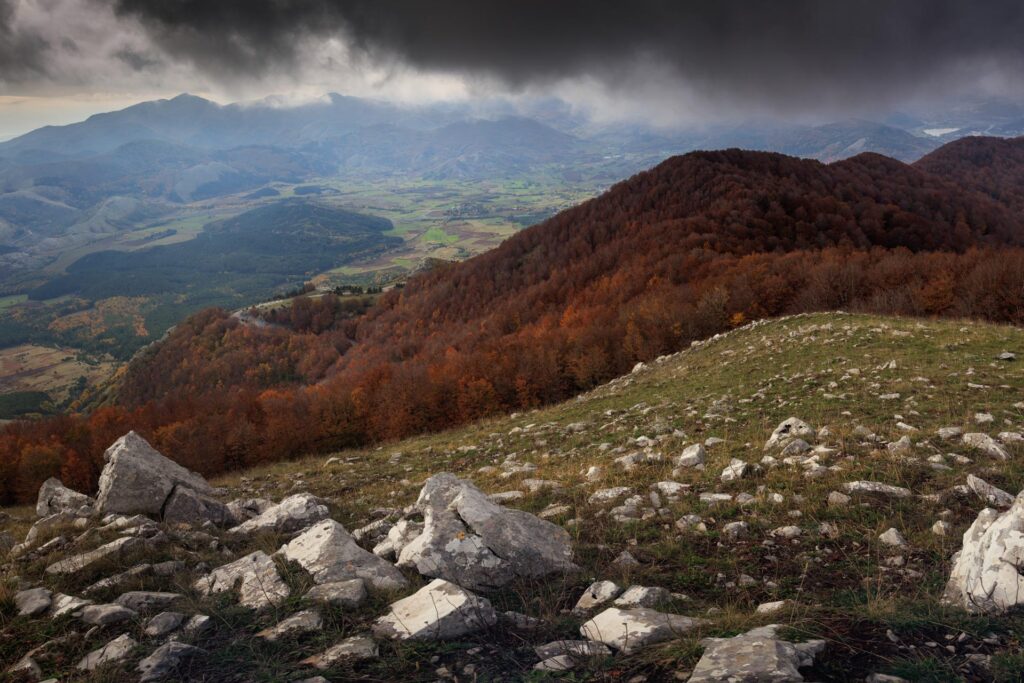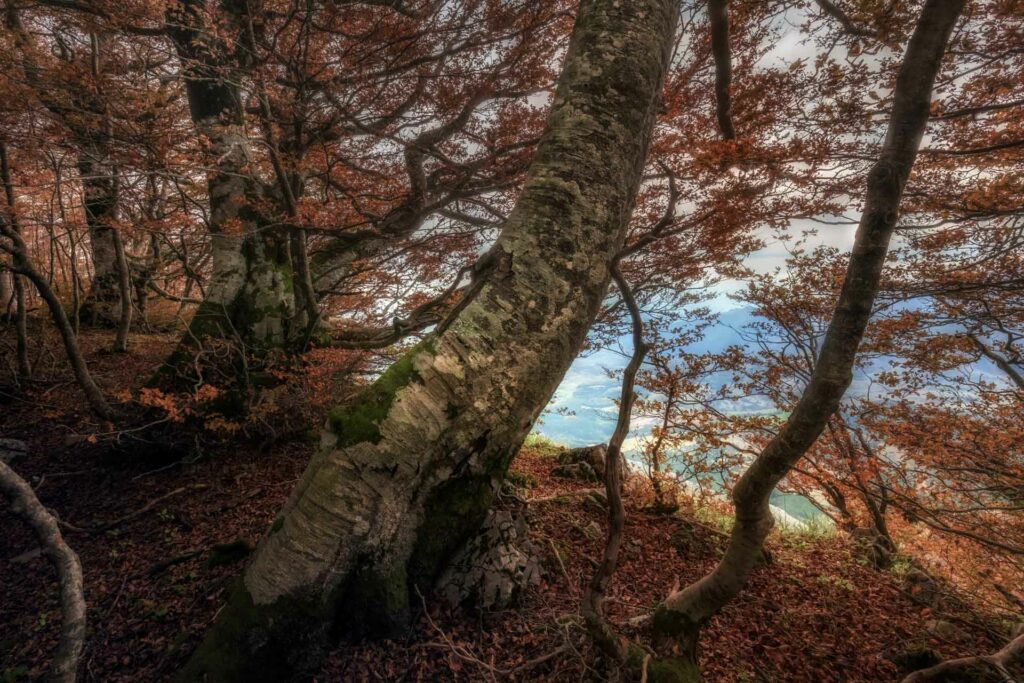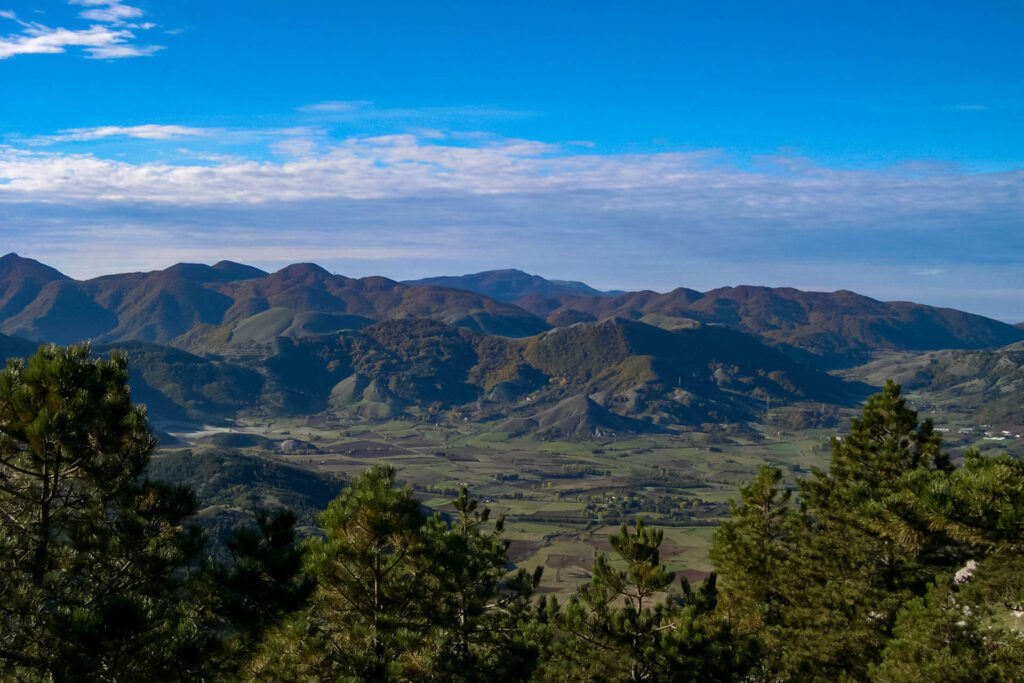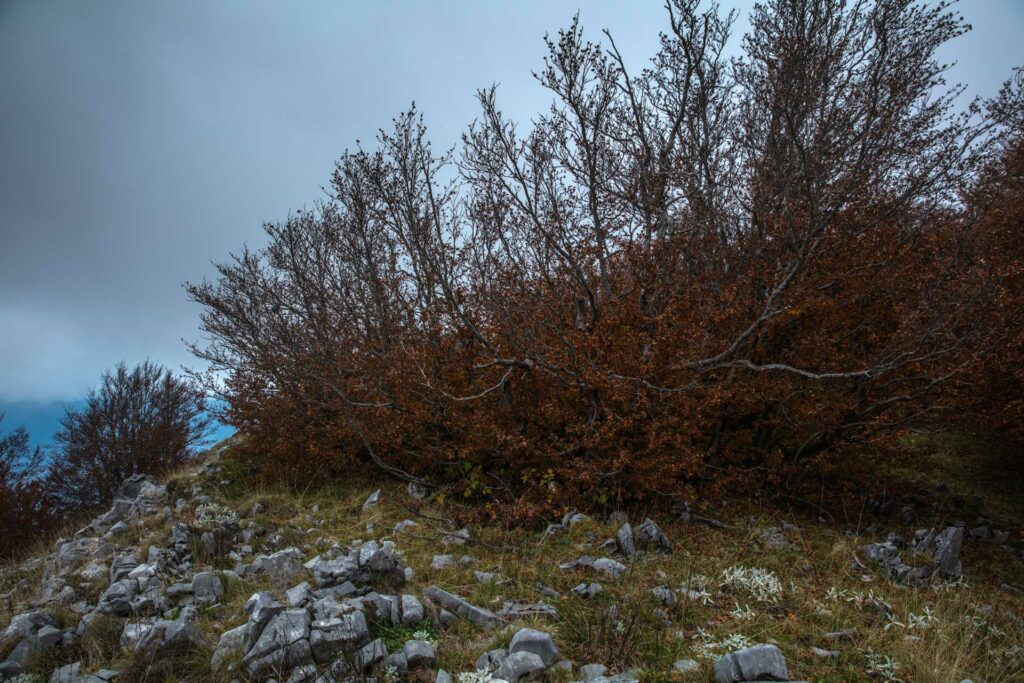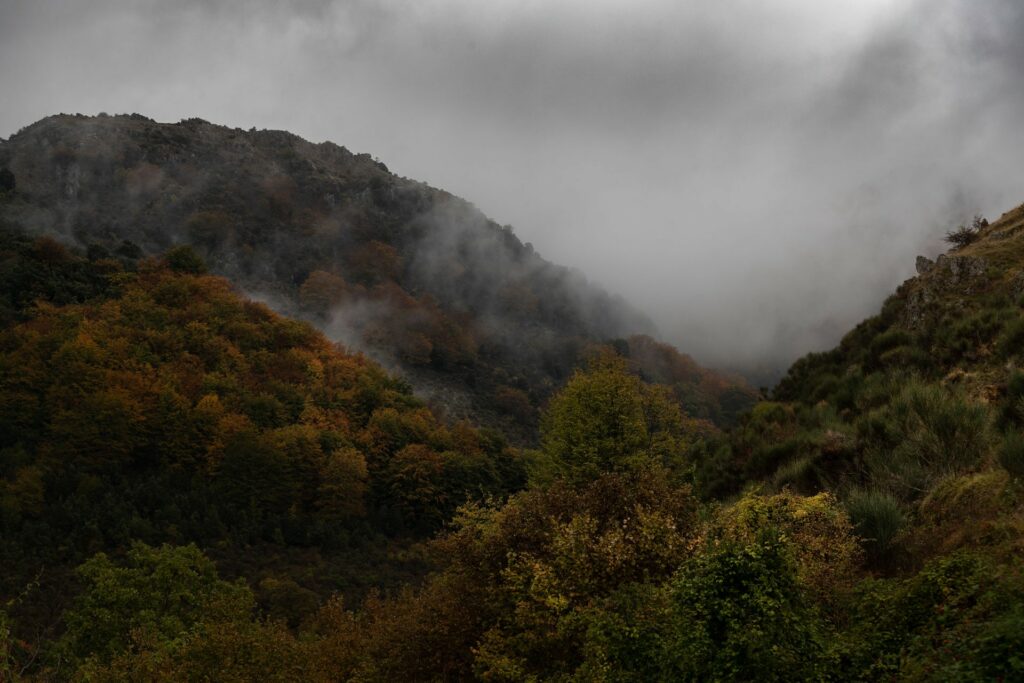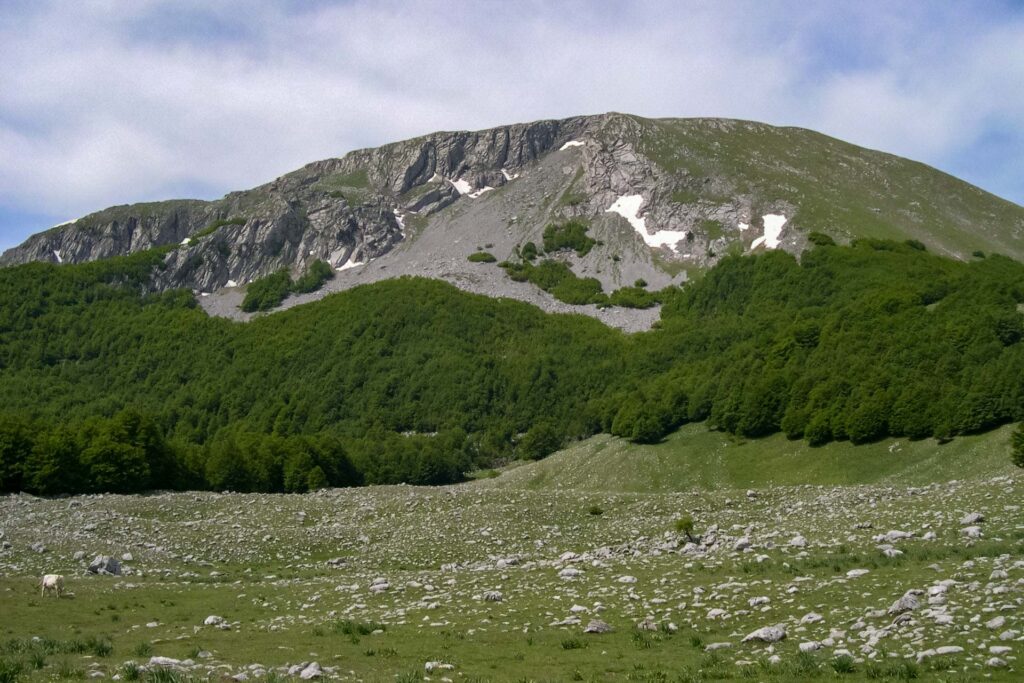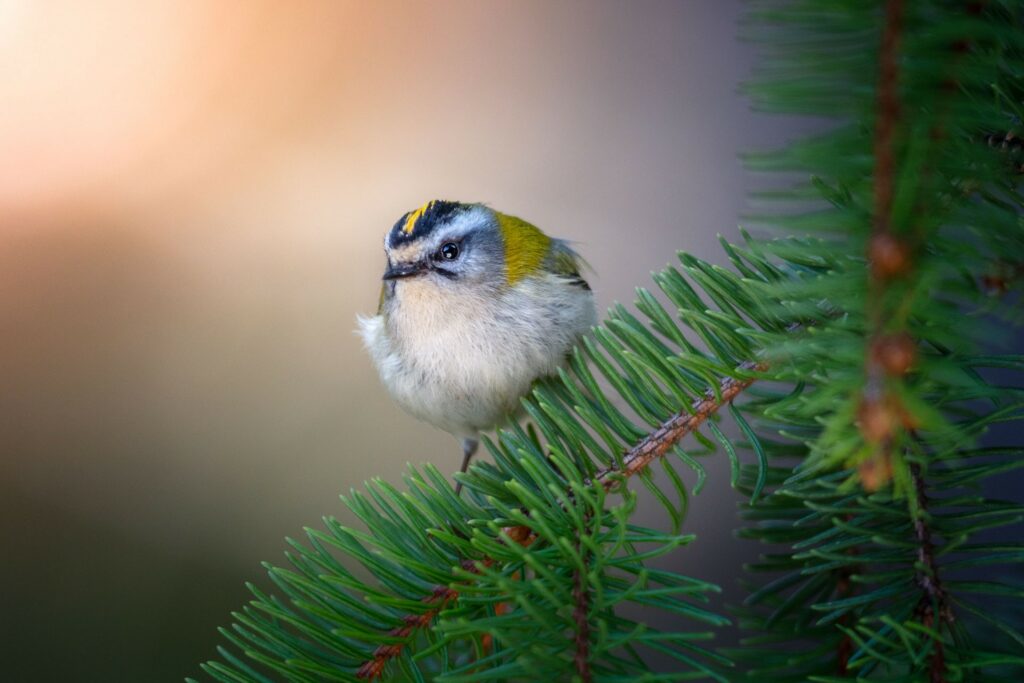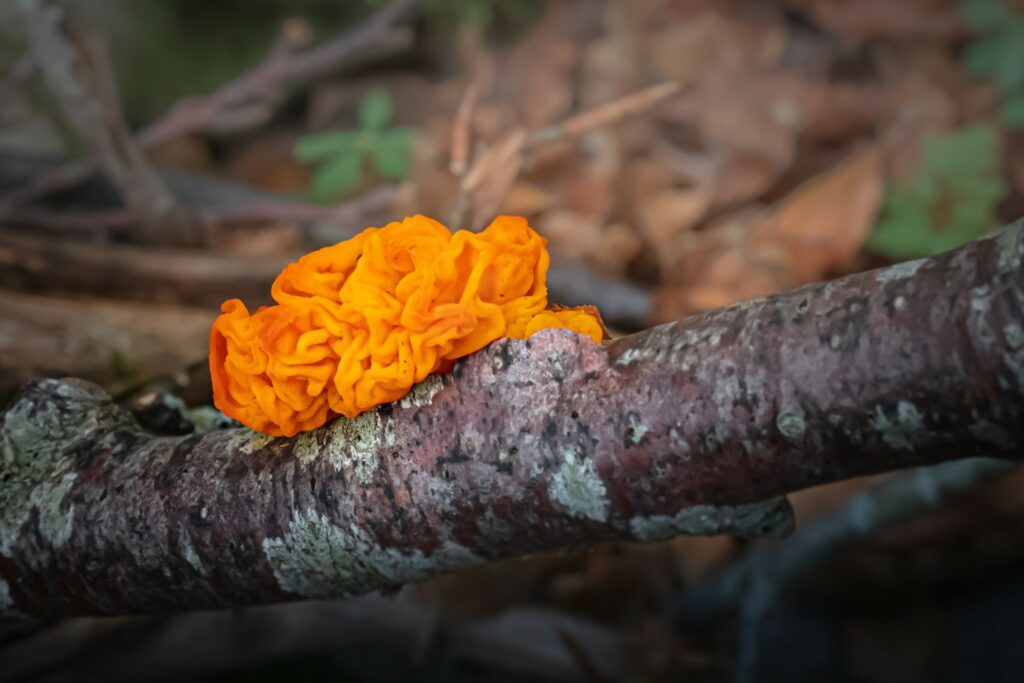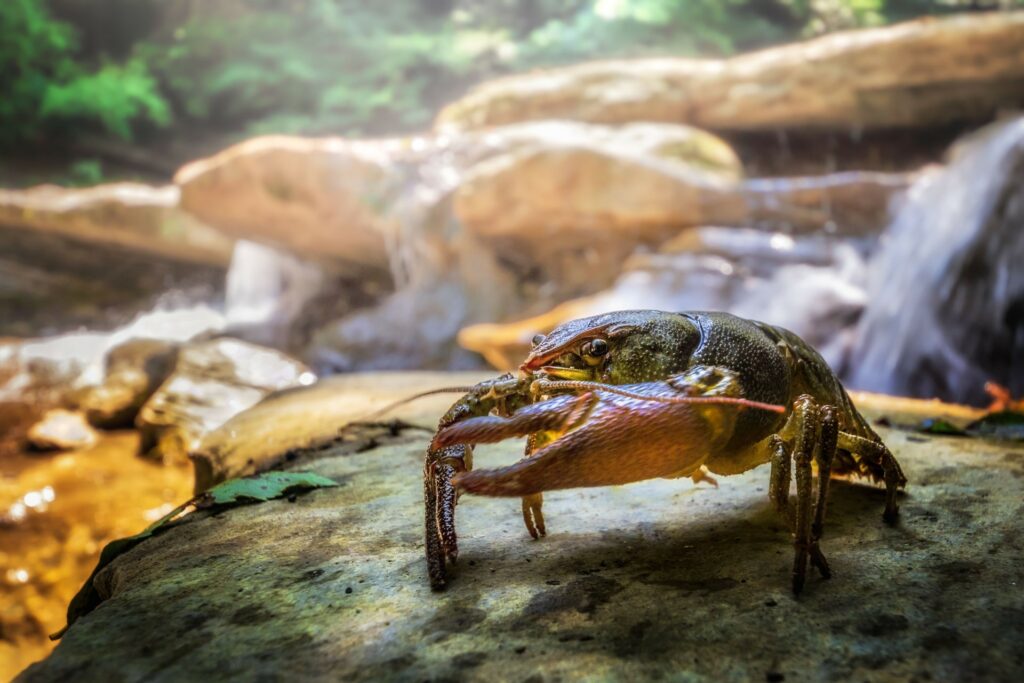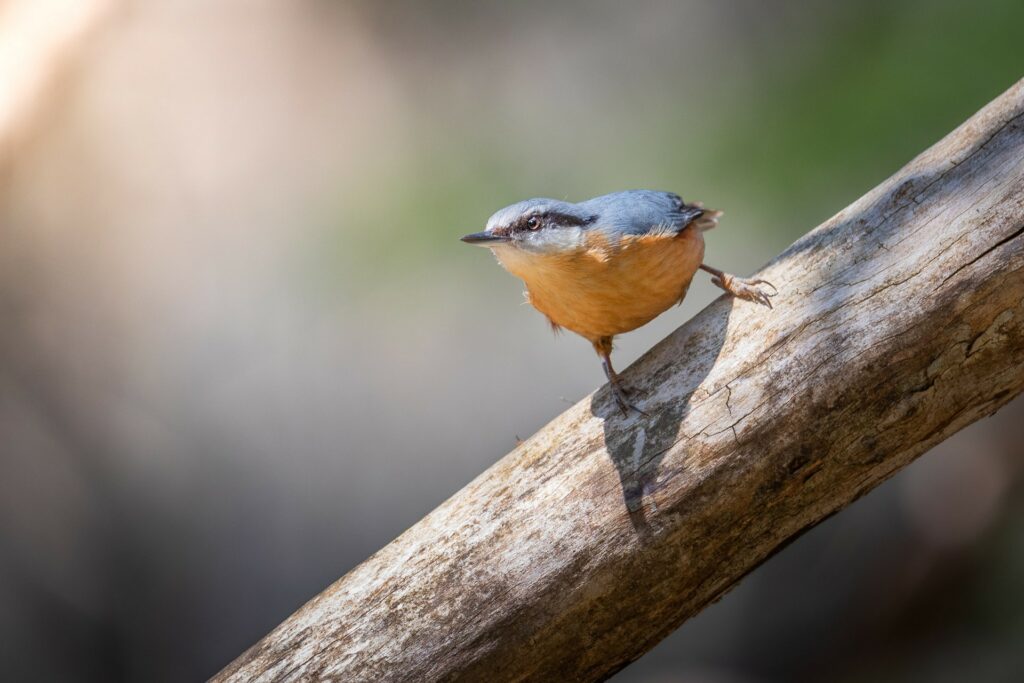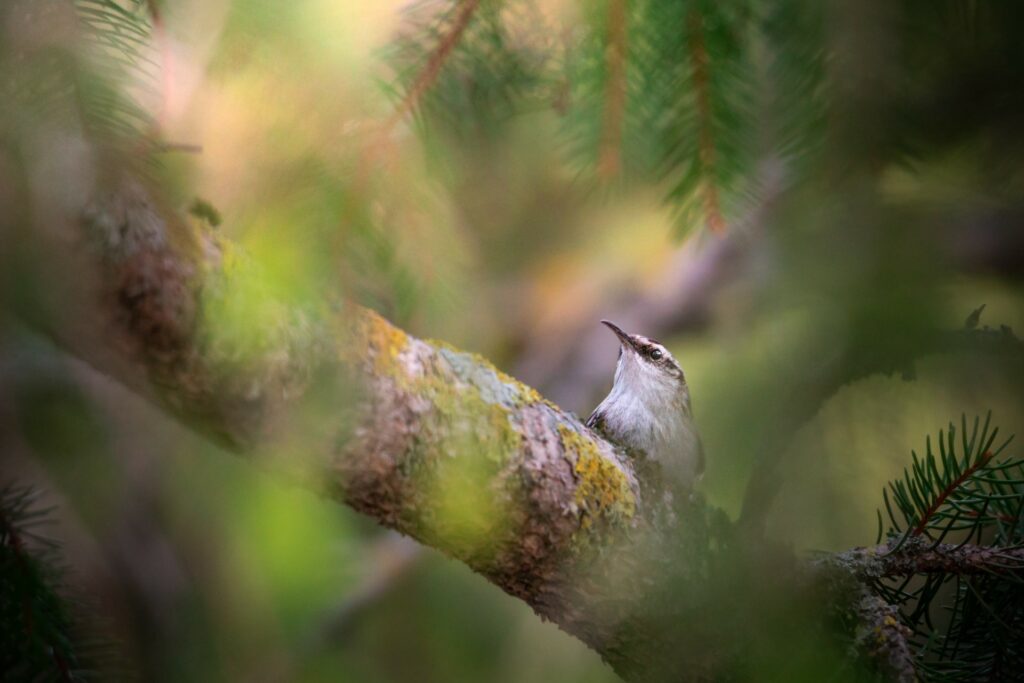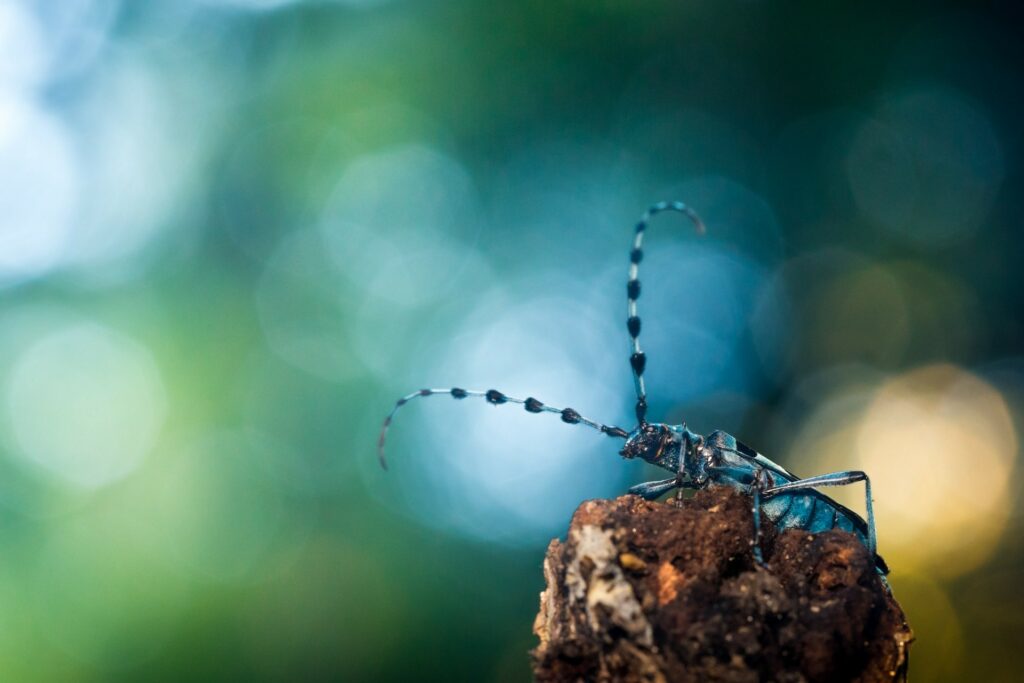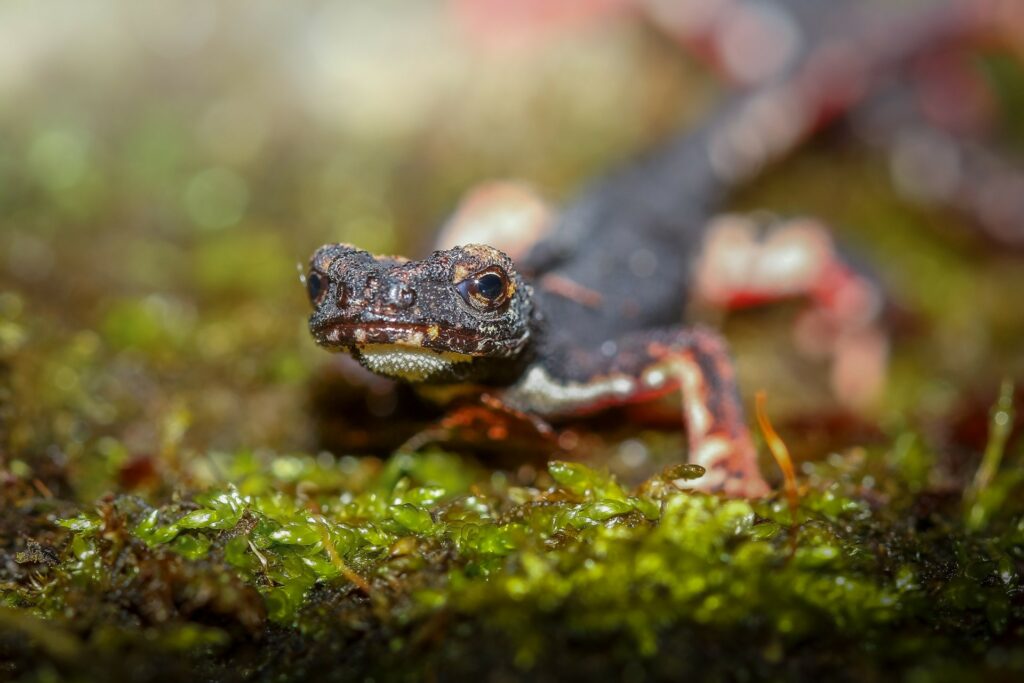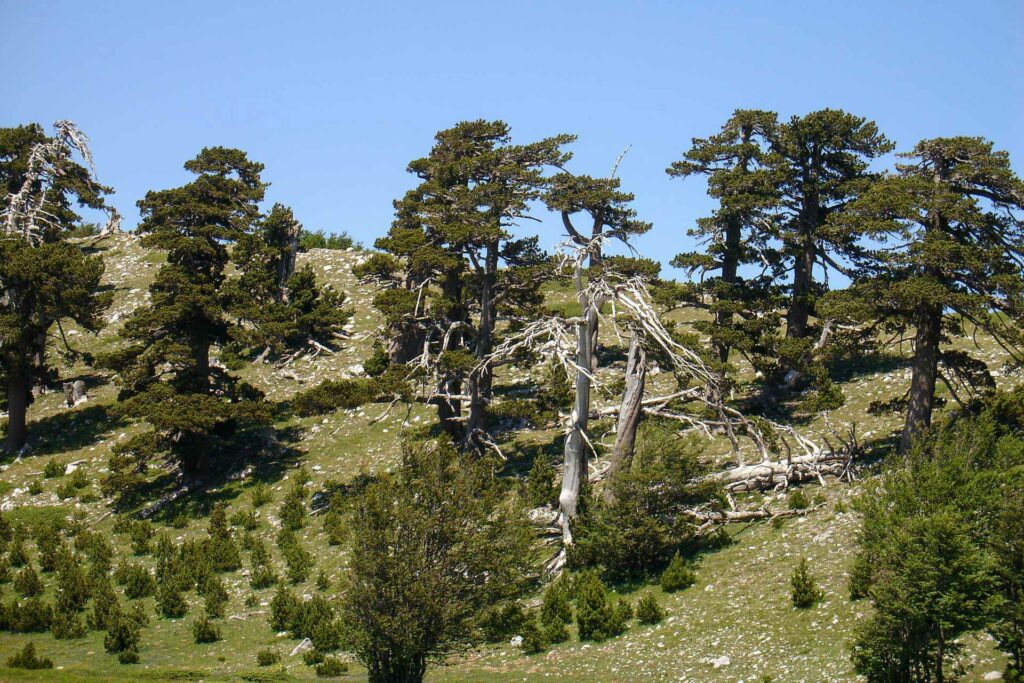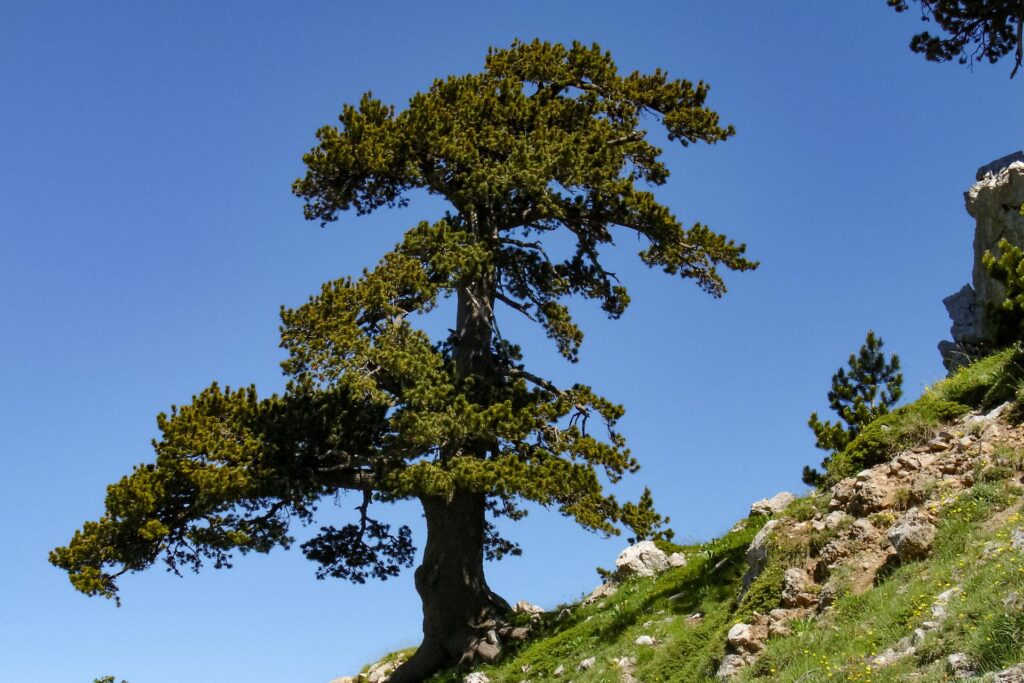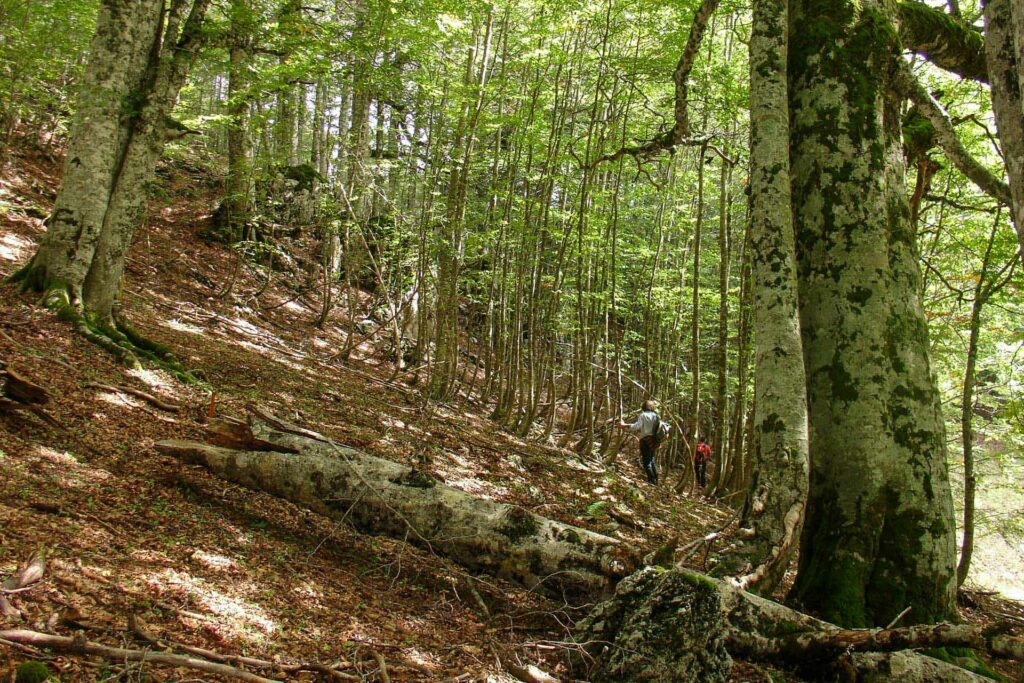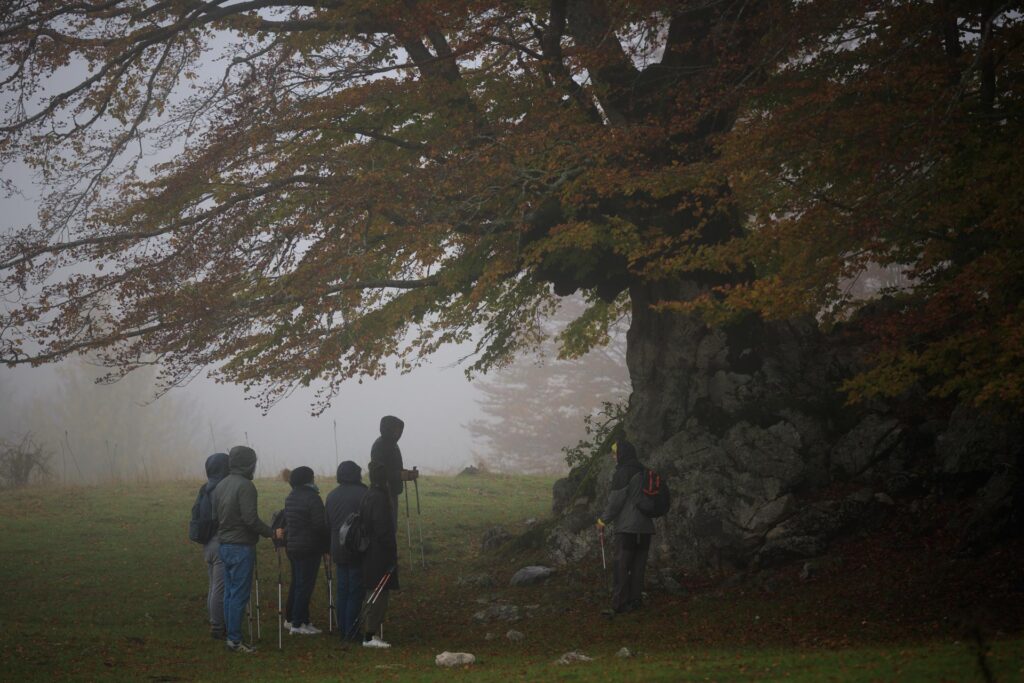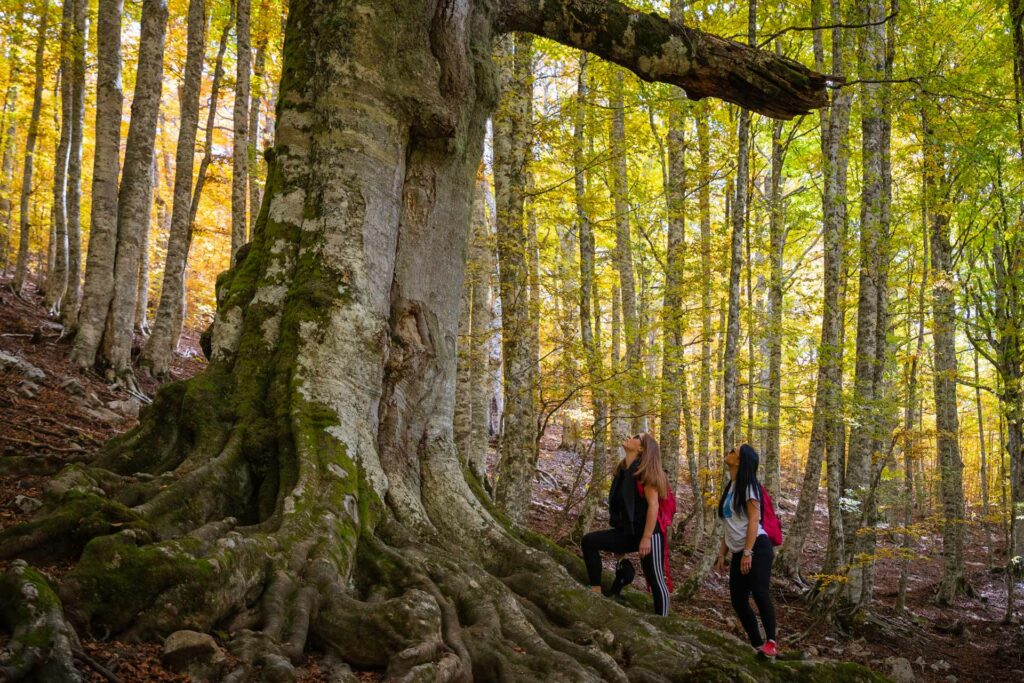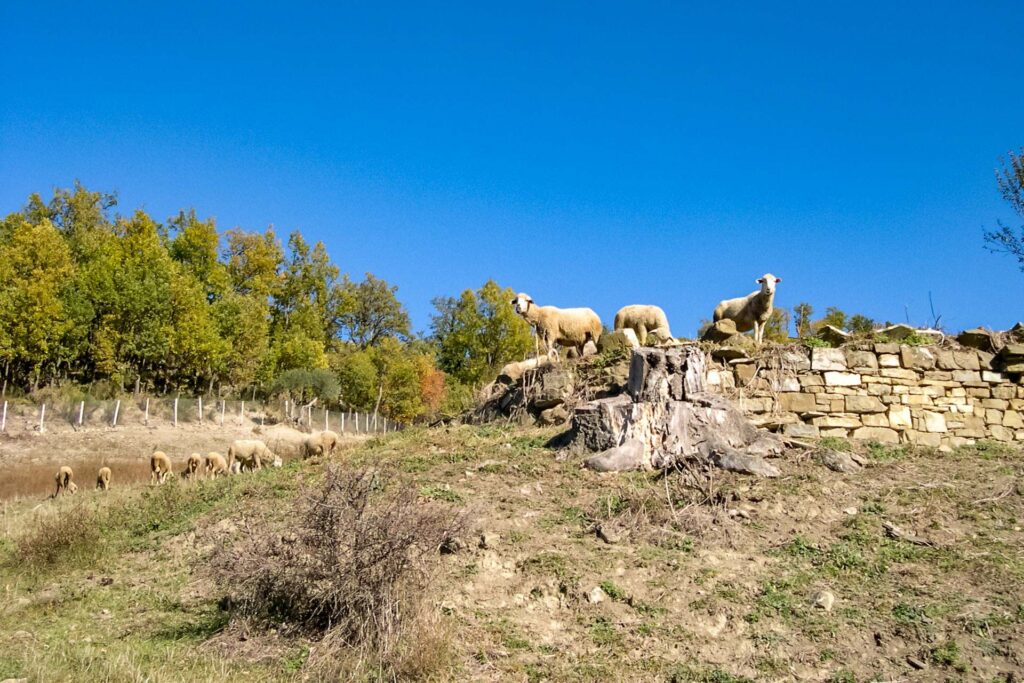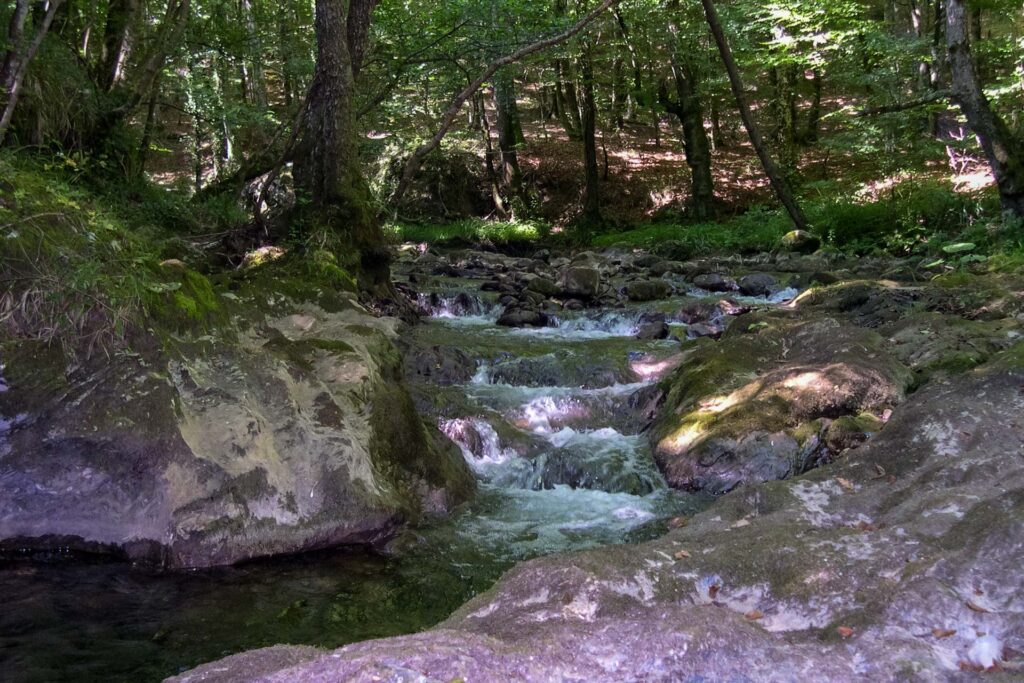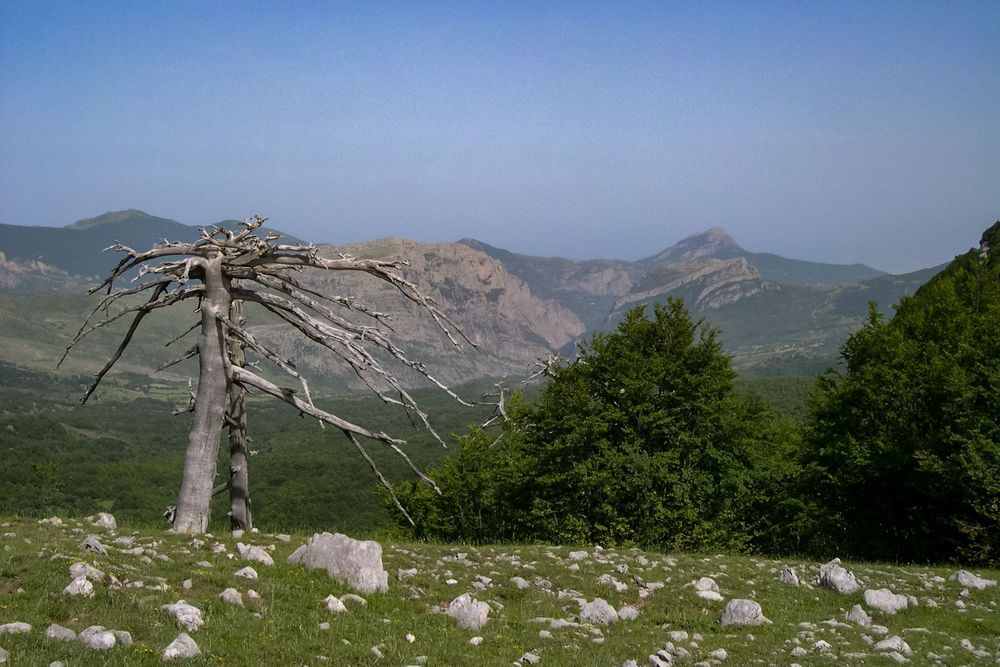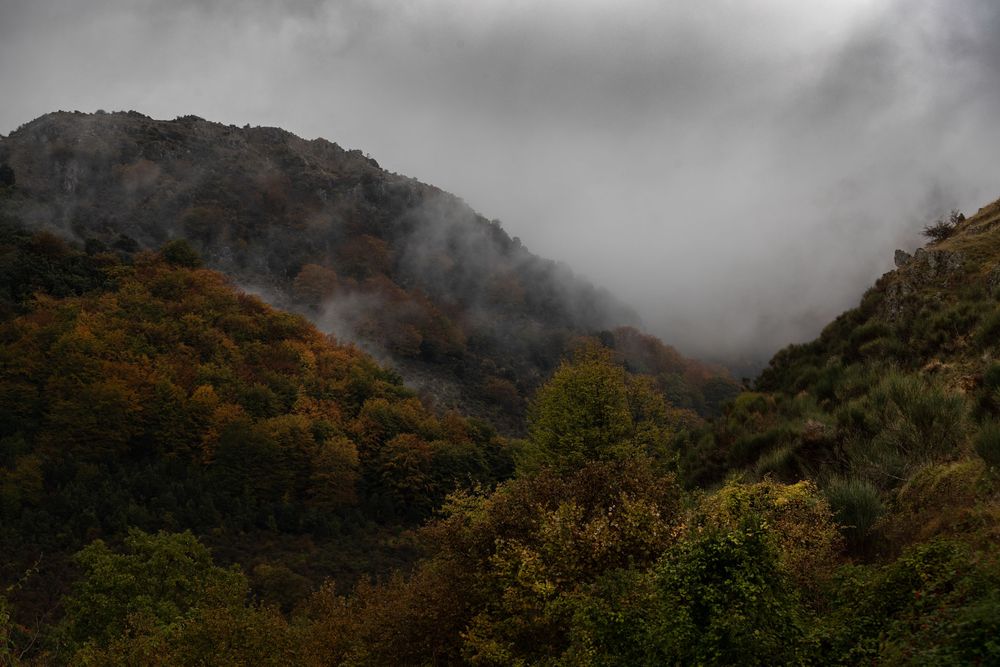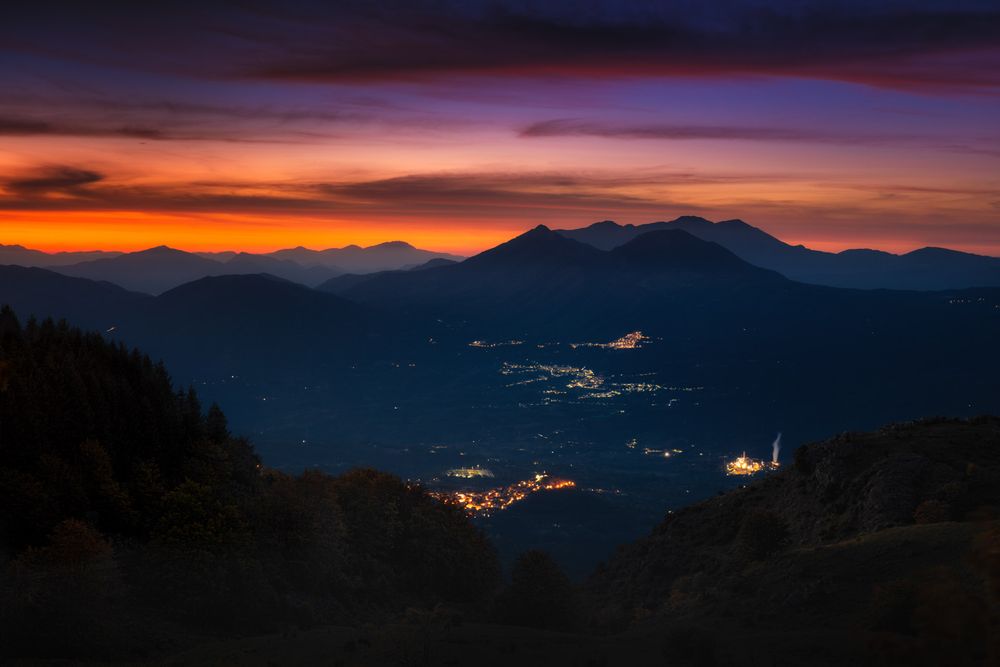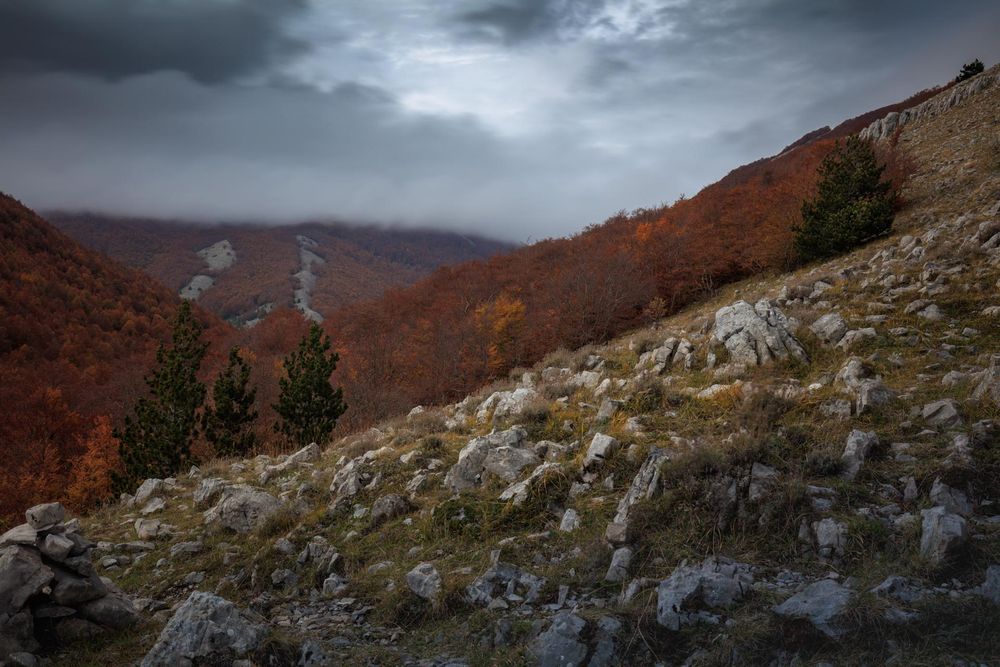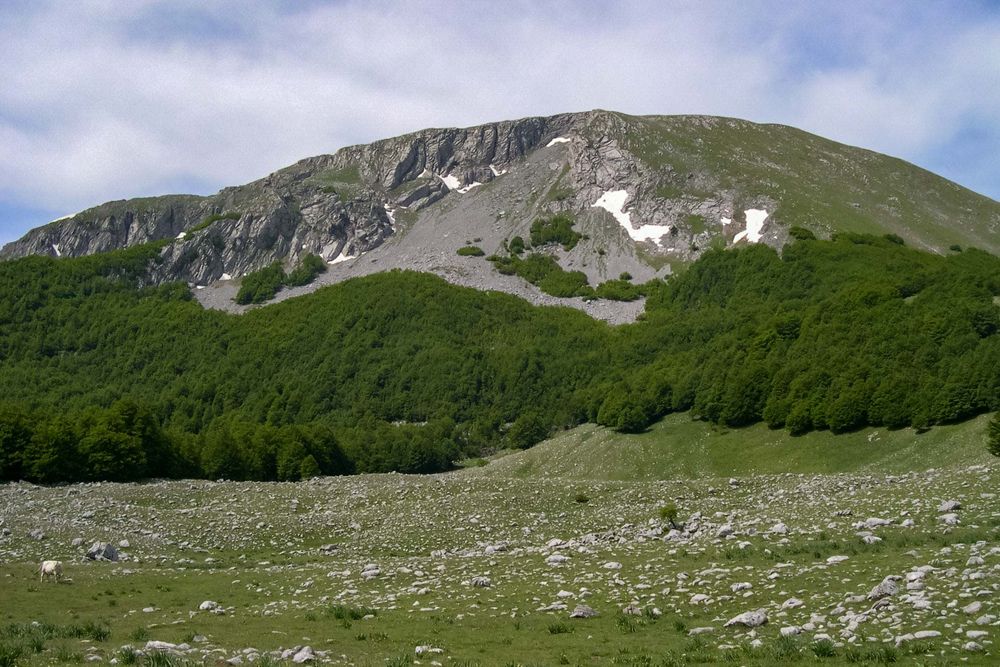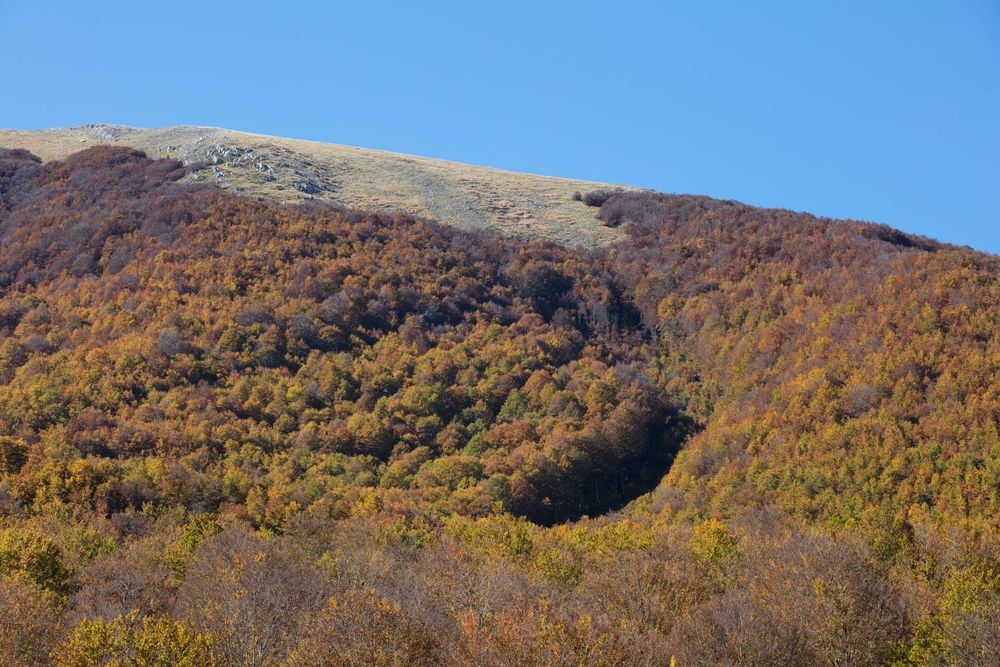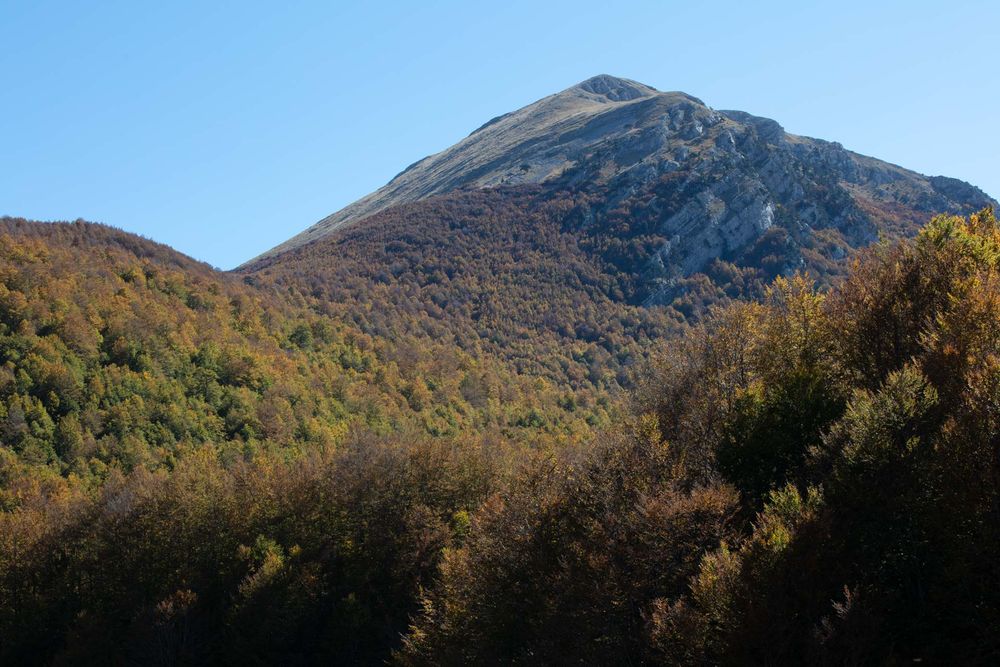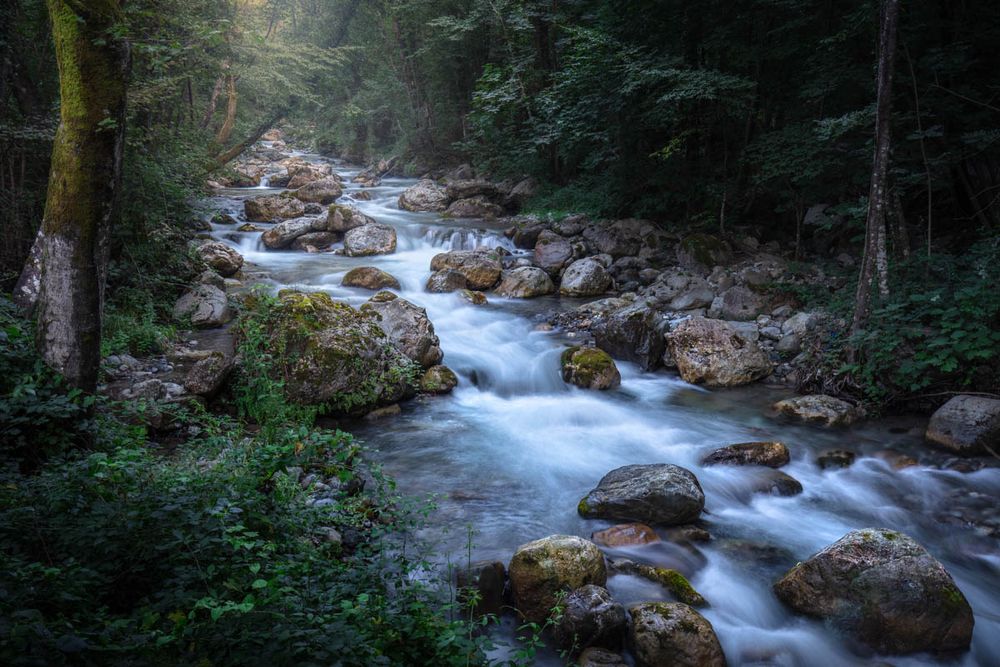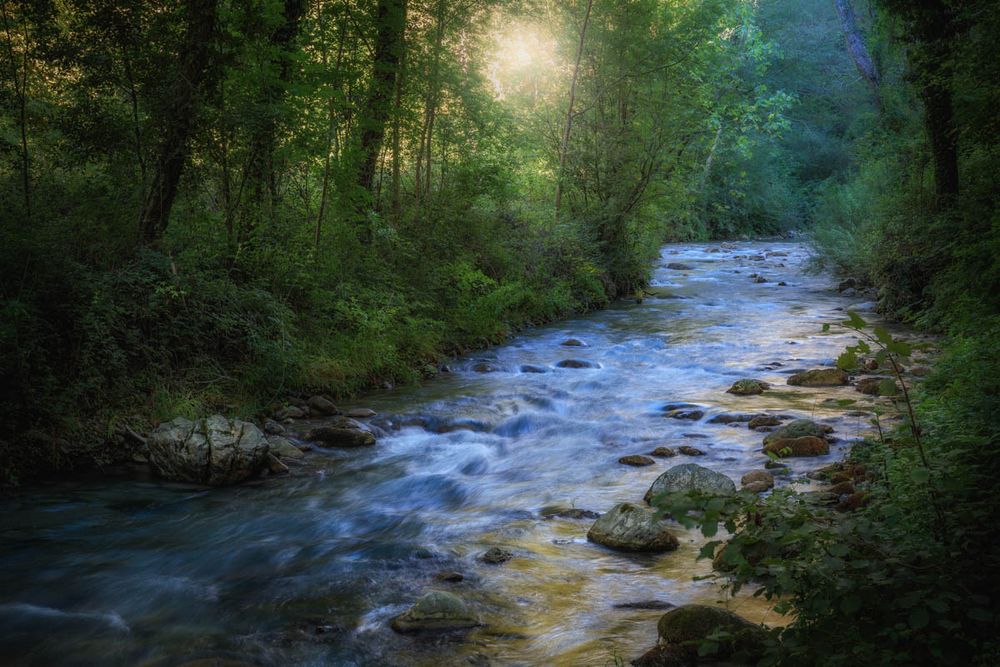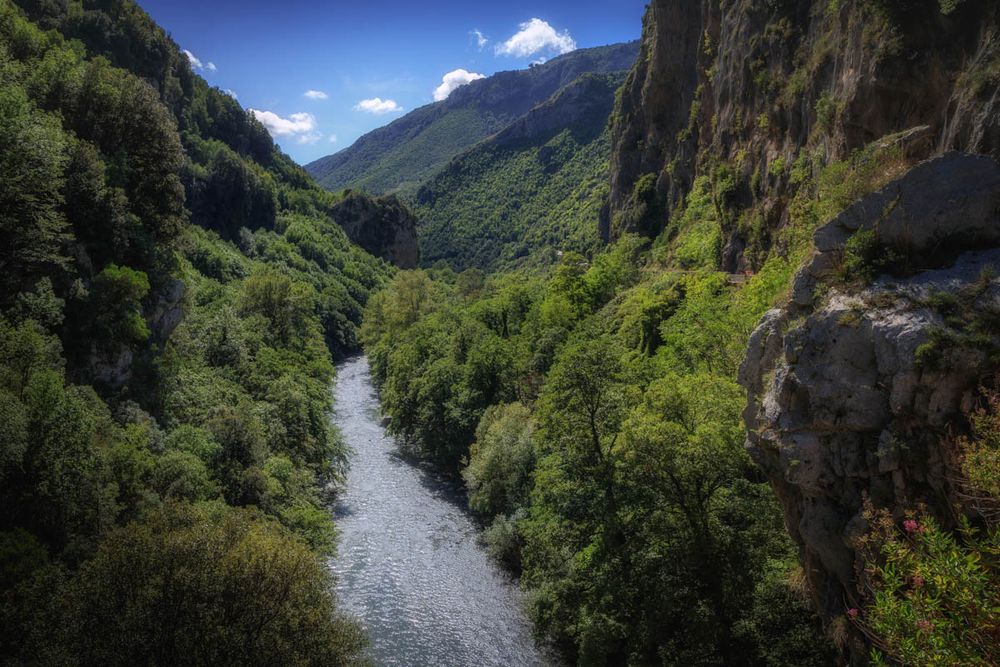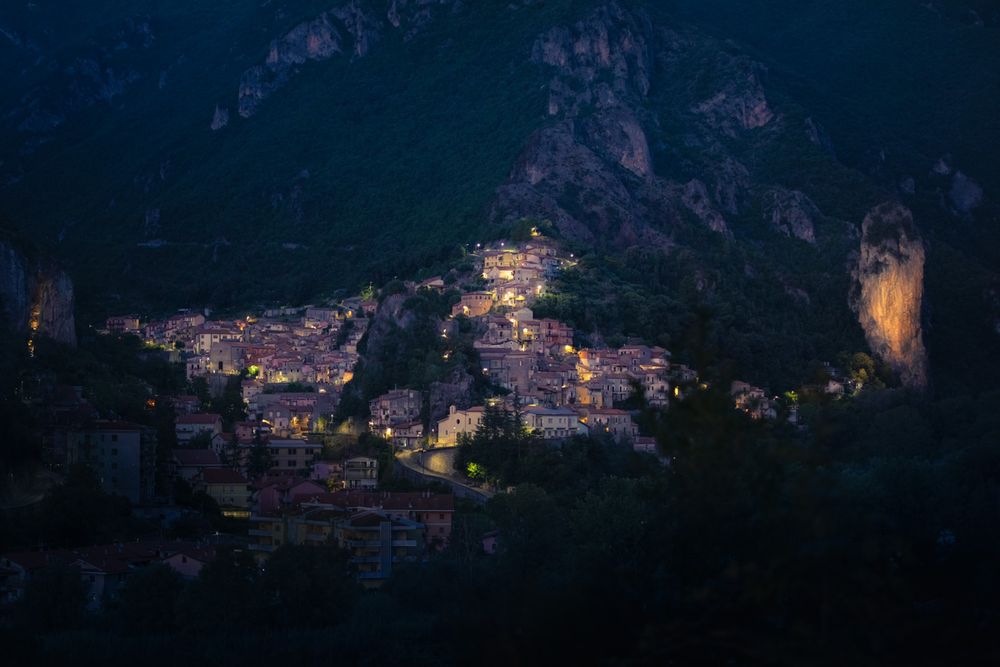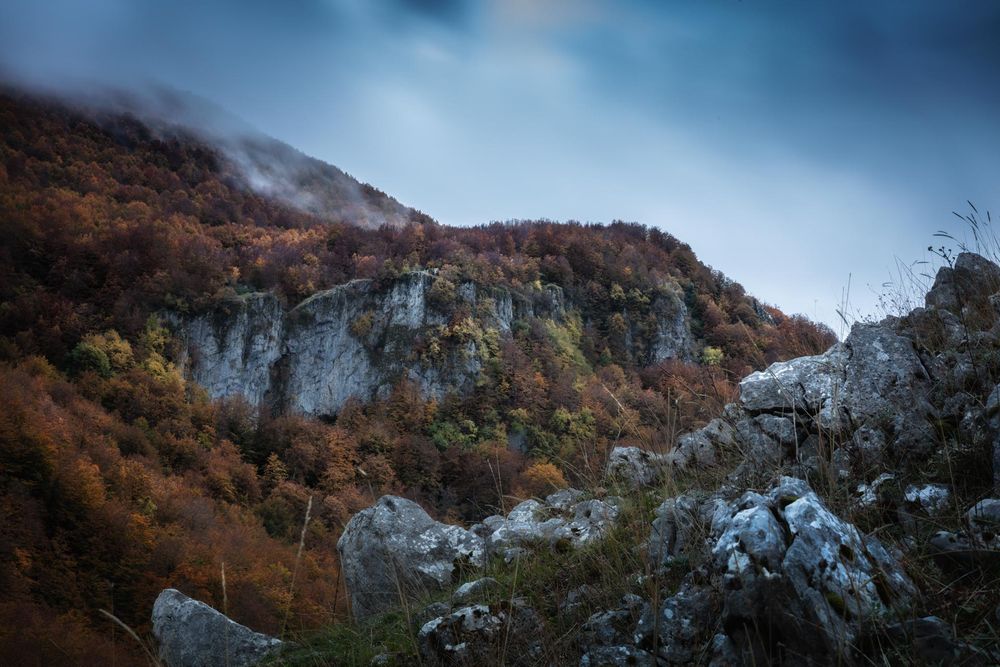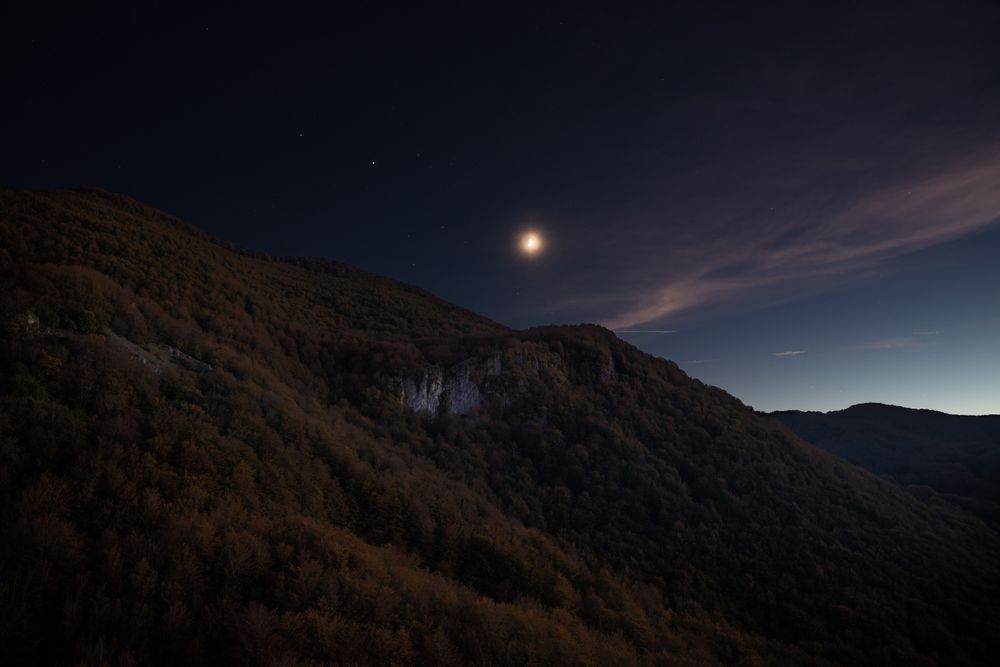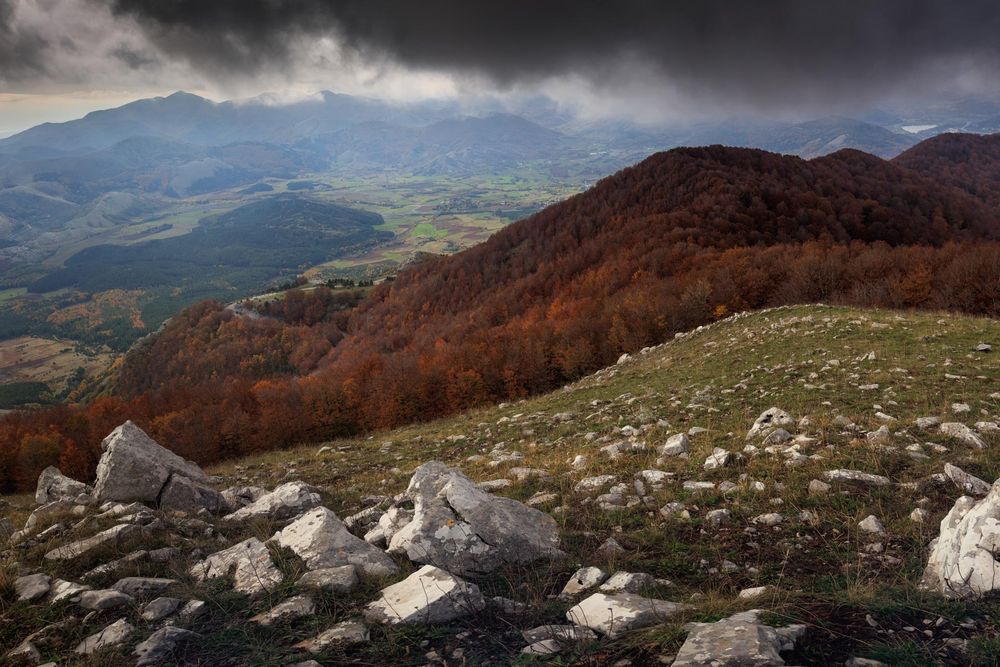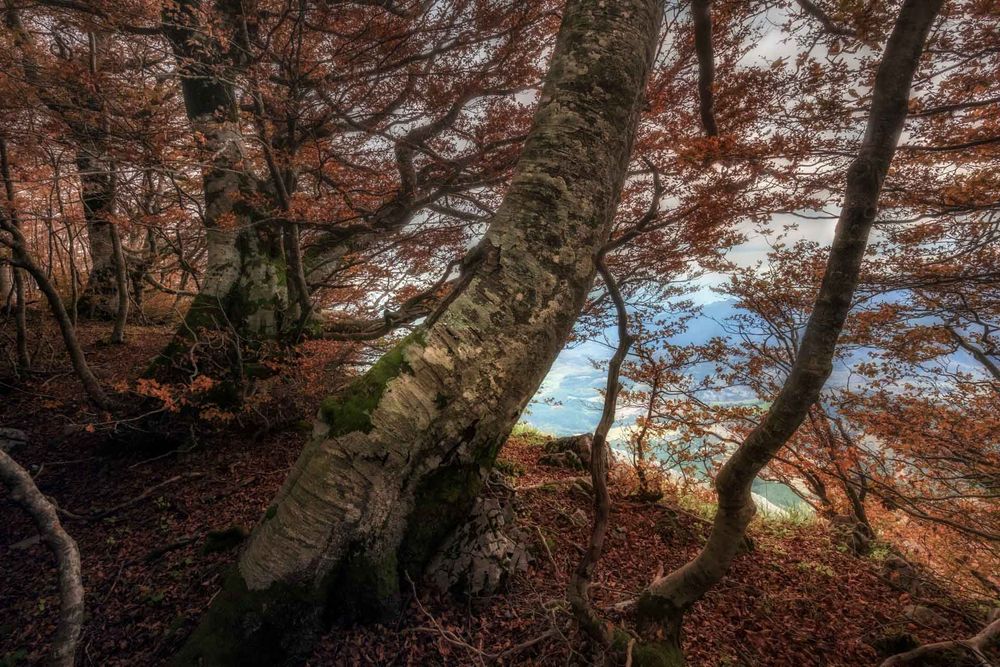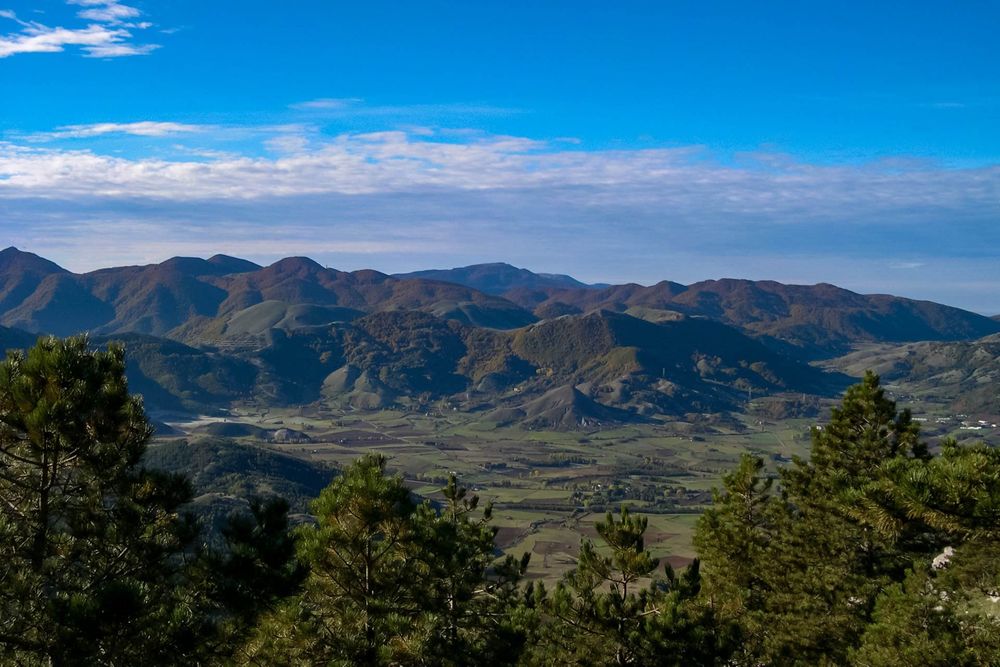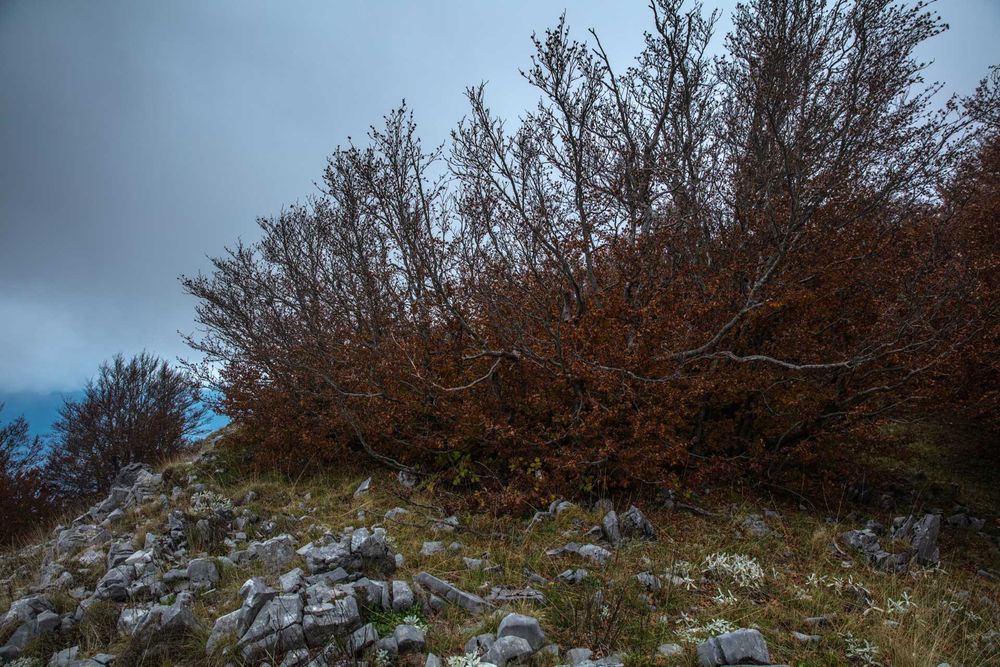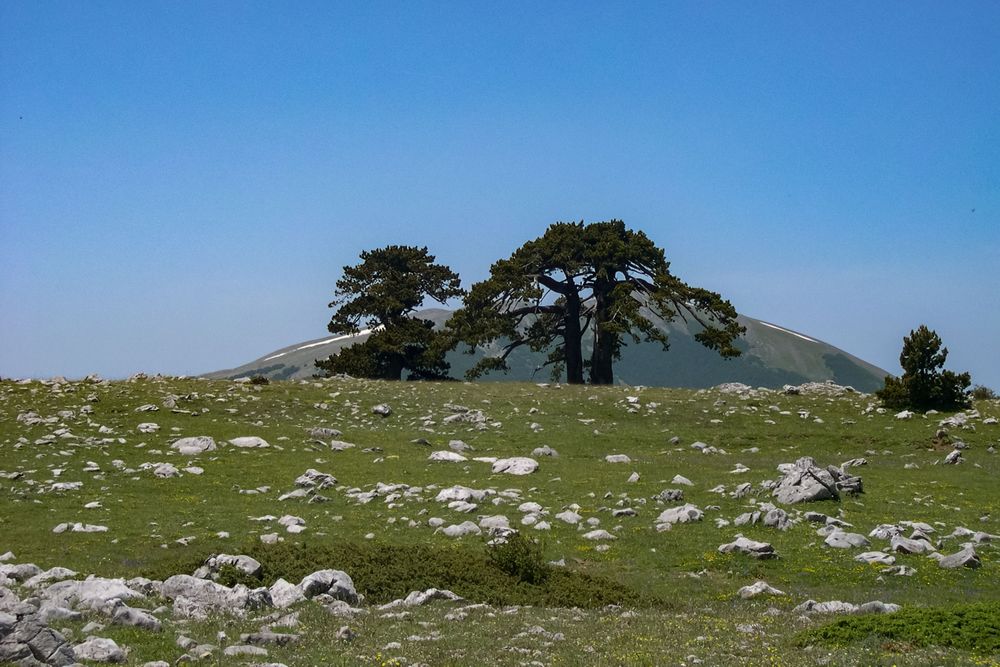Pollino National Park
The area
Pollino National Park, the largest protected area in Italy, was established in 1993 astride two regions – Basilicata and Calabria – and between the Tyrrhenian Sea and the Ionian Sea. It includes the territory of 56 Municipalities: 32 in the Province of Cosenza, 22 in the Province of Potenza, and 2 in the Province of Matera.
The protected area is mainly characterized by a mountainous morphology, with three massifs belonging to the Southern Apennines, specifically the Lucanian and the Calabrian Apennines: Pollino massif, located in the heart of the Park, Orsomarso mountain range in the south-west, Monte Alpi in the north.
Pollino massif is the highest mountain of the Southern Apennines, with summits of over 2,000 m, such as Serra Dolcedorme (2,267 m), Monte Pollino (2,248 m), Serra del Prete (2,181 m), Serra delle Ciavole (2,127 m), and Serra di Crispo (2,053 m). Between the latter two summits, the so-called “Grande Porta” (Big Entrance) leads to Piani di Pollino, the most famous plateau of the area surrounded by high mountain ridges where you can admire the most ancient specimens of the Heldreich’s Pine, the symbol of the Park.
The plain of Campotenese separates Pollino massif from Orsomarso mountains, rising up in the south-western area of the Park with a thick vegetation: Cozzo del Pellegrino (1,987 m), La Mula (1,935 m), Montea (1,825 m), Monte La Caccia (1,744), and Monte Palanuda (1,632 m) characterize an area of absolute integrity and beauty. In the northern section of the Park, Monte Alpi rises (1,900 m) and, westernmost, Monte La Spina (1,652 m).
The landscape is extremely varied: while in the north it slopes gently towards the rivers Sinni and Mercure-Lao, in the south it is rough and rugged. The territory is characterized by a sequence of mountains, plateaus, hills, crags and cliffs, magmatic rocks, dolomite rocks, glacial cirques, moraine deposits, caves, gorges. Some rivers are surrounded by a luxuriant woodland vegetation, such as River Peschiera, while others are trapped in deep gorges, such as rivers Raganello, Argentino, and Lao. Limestone is the dominant rock type, but there are also pillow lava formations, such as Timpa delle Murge. The gentle wooded slopes contrast with the imposing Timpa di San Lorenzo and its 800 m vertical rock face.
The vegetation’s distinguishing feature is the great variety of species bearing witness to the variety and vastness of the territory and the different climatic conditions influencing it. For some endemic species and the presence of rare plant species composition, this is a unique area in the Mediterranean. However, what makes the mountain and high mountain vegetation of Pollino really unique is the Heldreich’s Pine, the symbol of the Park: isolated or in small stands, this imposing tree can be found from the sunlit plateaus to the most inaccessible ridges, clambering up rough rock mountain sides and exposing tenaciously to bad weather and strong winds.
Heldreich’s Pine plays a very important role, both from an evolution and conservation point of view. In fact, it is considered as a true “living fossil”, a relict species of the “phytomigration” movements of the Balkan Peninsula associated with the great glaciations. The extraordinary vitality preserving it to this day derives from the relevant combination of particular botanical features of great value in relation to the habitat where it lives.
The forest
The two ancient beech woods (clusters) of the Pollino National Park represent unique examples of highly natural forest ecosystems in a Mediterranean mountain environment. Overall, they cover 574 ha with a buffer area of 2,852 ha. The inclusion of the old beech forest of Pollinello in a cluster with Cozzo Ferriero has allowed the inclusion in the serial site of populations at the altitudinal limit of the beech forest in a Mediterranean environment (2000 m asl). The two components grow in a wild and remote landscape. The large buffer area integrally protects these unique high mountain beech ecosystems making the Pollino a special site for the conservation of bio-ecological processes at the upper and southern altitudinal limit of the beech forest (high mountain forests in the subalpine transition zone in the Mediterranean).
Here we find a complex mosaic of structural forms belonging to all phases of the beech forest cycle, from seedlings to numerous centuries-old habitat trees and abundant dead wood that have preserved biodiversity with particular reference to endangered species. A section of the ancient beech forest of Pollinello presents a population where the signs of human hands are not found, as in a primary ancient beech forest. Numerous beech trees over 500 years old live here, including Michele and Norman over 620 years old, the oldest scientifically dated beech trees in Europe. A short distance away, always in the vicinity of nuclei of ancient beech woods, the millenary Italus grows, an Heldreich’s pine, a witness of past climatic eras, capable of reaching a centuries-old age in one of the wildest areas of peninsular Italy. These ancient beech woods represent one of the southernmost sites in Europe. We are, in fact, in a refuge area for forest species where centenary trees have had the ability to acclimate to climatic vicissitudes. These areas host unique genotypes, adapted to hot-arid climates, whose conservation is crucial for understanding the ability of beech to respond to current climate change. In summary, these ancient beech forests are located in a marginal ecological and geographical context and testify to the exceptional ability of the beech to adapt to extreme climates with harsh winters, late frosts and dry summers in a glacial refuge area.
The old-growth forest of Pollinello, in the province of Cosenza, obtained recognition as a UNESCO World Heritage Site in 2021. On Monte Pollinello, large tracts of centenary beech forests survived past forest cutting campaigns. On this slope centuries-old beech trees grow in close contact with very old (800-1200 years) Heldreich’s pines, a relict species from the Tertiary period. The structure of this centuries-old forest is very complex, testifying to the high naturalness of the population which develops in an extreme altitude environment with subalpine characteristics. Here the pure beech forest comes into contact with old Heldreich’s pines, that regenerate under the beech canopy in rocky, windy and snowy places. The structure of the beech population is characterized by an articulated diameter distribution which includes beech trees of one meter and numerous habitat trees. Pollinello is home to the oldest beech trees in the northern hemisphere, with several trees over 600 years old (maximum measured age: 620 years) in the primary old forest portion. The other centenary beech woods are also characterized by high levels of naturalness: according to historical documents and dendro-ecological surveys, many trees are more than 400-500 years old.
The old-growth forest of Cozzo Ferriero in Pollino National Park (Municipality of Rotonda, Province of Potenza) has been inscribed on the UNESCO World Heritage List. This beech forest develops along the ridge which from Coppola di Paola reaches Cozzo Ferriero, in Basilicata, in the countryside of the Municipality of Rotonda. It covers about 70 hectares and develops on a mainly flat area between 1,700 and 1,750 m, near the thalweg marking the border between Basilicata and Calabria. The area has a mainly western exposure and is geologically characterized by carbonate rocks – mostly dolomite limestone – on which moderately deep soils have formed. In this area, there are monumental beech trees over 500 years old, characteristic of the most mature stages of the forest dynamics, with trees of various sizes and deposits of dead trees, standing or windthrown, typical of old-growth beech forests. Here, the absence of significant human impact for a long enough time has fostered the natural dynamics, originating a complex forest rich in biodiversity.
The tree distribution according to the diameter clearly highlights the presence of two very different groups of trees: one group formed by small-size trees and another group formed by trees with a diameter of over 30 cm. The trees belonging to the first group are generally in good to decent shape: the trunk is usually straight and without malformations, and the crown is moderate and high, unlike more old-growth trees which often show the signs of age. Their distribution is not uniform and seems to concentrate mainly where the canopy is interrupted, favoring the successful establishment of young trees.
Locally, the high symbolic, historic, and cultural value of these forests is witnessed by their importance in the eyes of the local communities, who have respected and conserved them also in adverse climatic conditions and during difficult historical periods like the two world wars, handing them down to us.
The biodiversity
The varied orographic structure of the massif and its richness of vegetal formations and waters represent the foundation of the diversity of the animal populations inhabiting the Park.
The beech woods of these areas, sometimes mixed with Abies alba subsp. Apennina, spread in the high mountains (higher than 1500 m asl) in the Calabrian Apennines, from Pollino to Aspromonte and are characterized by the presence of Mediterranean-mountain and Mediterranean pontic species such as Ranunculus brutius and Campanula trichocalycina.
In the ancient beech woods human activity has been absent for many decades, in some places for many centuries, as demonstrated by the widespread presence of habitat trees and large dead wood and in all stages of decomposition. There are numerous species indicating age, such as Lobaria pulmonaria and Osmoderma italicum, testifying to the rich biodiversity that lurks in these forests.
Starting from the vast and varied world of insects, we mention the Buprestis splendens, one of the rarest beetles in Europe, and the Rosalia alpina, a beautiful and showy ash-blue beetle with velvety black spots, typical of mature beech woods. The Pollino amphibians include various Italian endemic species or subspecies, including the Italian crested newt, the spectacled salamander, the Appenine Yellow-bellied toad and the more common tree frogs. Among the reptiles, two endangered species live in the Park: the European pond turtle and the Hermann’s tortoise. In the streams and spring waters it is also possible to observe white-clawed crayfish and the freshwater crab, which live in some streams of the Park with clean and well-oxygenated waters. The crayfish, in particular, enters the otter’s food chain as prey, present in some watercourses of the National Park with a reduced and very fragmented population.
The birdlife is varied and no less relevant. There are twelve species of diurnal nesting birds of prey, including the golden eagle, which nests on the mountain walls of the massif, and the Egyptian vulture, the smallest of the European vultures. Once abundant throughout the South, it has now become very rare due to the changed environmental conditions: it is in fact linked to the large movements of livestock which have now become sporadic. He returns from Africa in the months of April-May and frequents the south-eastern area of the territory of the Pollino National Park.
Among the mammals there are many species present in the territory of the Park, but the species that deserves the most attention is certainly the roe deer, very important from a genetic point of view because it perhaps belongs to the last original population of the Apennines. Finally, the Pollino, thanks to the very rough morphology of the territory and which therefore offers many possibilities for refuge, seems to be, of the whole southern Apennines, the area of greatest interest for the conservation of the wolf.
The flora of the Pollino massif has some interesting characteristics also due to the presence of single floristic species, especially important for their distribution and presence in the Park. However, the true symbol of the Park’s biodiversity is the famous Heldreich’s pine: until the beginning of the 19th century, only shepherds and woodcutters knew of the existence of large pines on top of a few inaccessible mountains of the Pollino. The first news dates back to 1826, when the Neapolitan botanist Michele Tenore collected for the first time some twigs of this pine at Piani di Pollino at about 1,850 m above sea level, which were however confused with other similar pine species. Until the early 1900s there was little clarity on the Pollino pine, until, in 1905, Biagio Longo spoke for the first time of Heldreich’s pine due to the peculiarity of the bark, whose fissures in large polygonal plates make it similar to the scale armor of the Roman legionaries, known as lorica. Emblem of the Park, it is of great importance both from an evolutionary and conservation point of view, and is considered a real “living fossil”.
Getting here
If you travel by car, both if you come from the north and from the south, exit the highway A3 between Lauria Nord, in Basilicata, and Spezzano Terme, in Calabria: you will reach many of the Park Municipalities, connected by road SS 19 which crosses the protected area.
In Calabria, on the Tyrrhenian coast, along road SS 18 from Tortora to Belvedere M.mo, you can take several roads leading inland: among the others, road SS 504 connecting Scalea to Papasidero and Mormanno, by way of Santa Domenica Talao, and road SS 105 connecting Belvedere M.mo to Castrovillari and Francavilla M.ma.
If you come from road SS 106, you can also reach the Ionian coast by taking road SS 92. Always on this side, if you come from the north-east on road SS 106, immediately after Policoro (in Basilicata), you can take road SS 653, the “Sinnica” valley road leading to Valsinni in Valsarmento, and after the lake of Monte Cotugno you can continue to Valle del Frido. Going ahead along “Sinnica”, you will cross the thermal area of Latronico and reach the highway junction of Lauria Nord.
If you travel by bus, you can take the several bus lines stopping not far from Rotonda, in the Province of Potenza.
If you prefer the train, important railway junctions are Sapri, in Campania; Scalea, Paola, Roggiano Scalo – San Marco Argentano, Trebisacce, and Sibari, in Calabria; Policoro and Maratea in Basilicata. Finally, it is possible to stopover at the following airports: Lamezia Terme (CZ), Naples, and Bari.
For information:
Train timetable: www.trenitalia.it
Bus service: www.simetspa.it, www.lavalle-bus.it
The trails
You can visit the beech forest of Cozzo Ferriero by planning a hiking trip along the CAI trails crossing it. Below, an easy trail which starts from Fasanelli mountain lodge and gives the opportunity to carry out a pleasant tour inside this natural monument, now UNESCO World Heritage.
However, a visit to Pollino National Park cannot overlook the true symbol of this vast and wild territory: the Heldreich’s Pine. Even if there are many tours of all levels of difficulty to go and discover these fascinating trees, we would like to recommend a short and relaxed walk suitable for all visitors to Belvedere di Malvento, a panoramic viewpoint where you can admire some specimens.
1. Among the oldest beech trees in Europe
An easy trail to visit the beech forest of Cozzo Ferriero
- Distance: 2.5 km (loop trail)
- Elevation: 500 m
- Estimated hiking time: 2 hours
- Difficulty level: moderate
The tour follows the trail 904/C starting from Fasanelli mountain lodge and arriving in Cozzo Ferriero (1,790 m) at the connection with trail 908. It is a pleasant uphill trail surrounded by the beech forests inscribed on the UNESCO World Heritage List. The route of moderate difficulty develops along a forest road and continues along a trail, while some stretches go freely uphill into the beech forest.
The trail gives the opportunity to cross areas of freely developing old-growth forest and to reach a viewpoint over the Calabrian slope of the Park where you can enjoy the panoramic view of Pollino and Orsomarso Massifs, Sila, the whole Basilicata, and the Aeolian Islands.
2. Belvedere di Malvento and the Heldreich’s Pines
A short walk to discover the symbol of the National Park
- Distance: 1.5 km
- Elevation: 100 m
- Estimated hiking time: 30 minutes
- Difficulty level: easy
The trailhead of this short walk is Piano Ruggio (1,550 m AMSL), a karst plateau located in the heart of the Park, on the border between Basilicata and Calabria. From here, it is possible to reach Belvedere del Malvento, a viewpoint used in the past as a cableway station for the transport of timber, overlooking the rock faces of Timpone della Capanna and Piana di Castrovillari. From here, you can admire the Heldreich’s Pine, the symbol of Pollino National Park.
Things to do
Trekking and rafting, canyoning, climbing and free climbing, mountain biking and horseback riding: these are only some of the main outdoor activities you can practice throughout the year in Pollino National Park.
A true outdoor gym in which visitors will have the opportunity not only to choose and embark in different activities, but also to discover an invaluable cultural, landscape, and natural heritage. With its great variety of natural and human environments, Pollino Park represents an extraordinary wilderness area that is worth exploring: a place made by several sceneries, where wild and unspoiled nature combines with history, culture, and popular traditions.
In order to enrich the visit to the protected area and discover the old-growth beech forest of Cozzo Ferriero, we recommend a visit to the Ecomuseum of Pollino located in the historical complex Santa Maria della Consolazione in Rotonda, in the Province of Potenza, which collects the whole heritage of Pollino Park and illustrates the way of life characterizing its territory. Combining nature, history, and technology in a simple and captivating way, the Ecomuseum describes each aspect of the Park territory and represents an attraction for visitors of all age groups.
From the history of the Park to flora and fauna, from culture to traditions, the exhibition represents a fascinating journey leading its visitors to discover the protected area, with the aid of exhibition supports and innovative technologies based on the new languages of museum communication, as well as images, footage, 3D reconstructions, tactile, visual, and auditory experiences.
Besides the Ecomuseum, in the Park territory there are other important museums, including the Arbëreshë Culture Museum in San Paolo Albanese, the Museum of Thermalism in Latronico, the International Museum of Graphics in Castronuovo Sant’Andrea, the Arbëreshë Ethnic Museum in Civita, “Nibbio” or Nature Research Facility of Pollino in Morano Calabro, the Literary Park “Isabella Morra-Valsinni”, and the Virtual Museum in Ajeta.
There are also various visitor centers and information points, including the Visitor Center in Morano Calabro, the Visitor Center in Mormanno, the Visitor Center in Orsomarso, and the information points in Acquaformosa, Belvedere Marittimo, Sant’Agata d’Esaro, and Santa Domenica Talao.
In the Park, several official guides and specialized environmental-hiking guides organize hundreds of hikes throughout the year, from walks surrounded by the spring, summer, and autumn colors to snowshoeing in winter.

